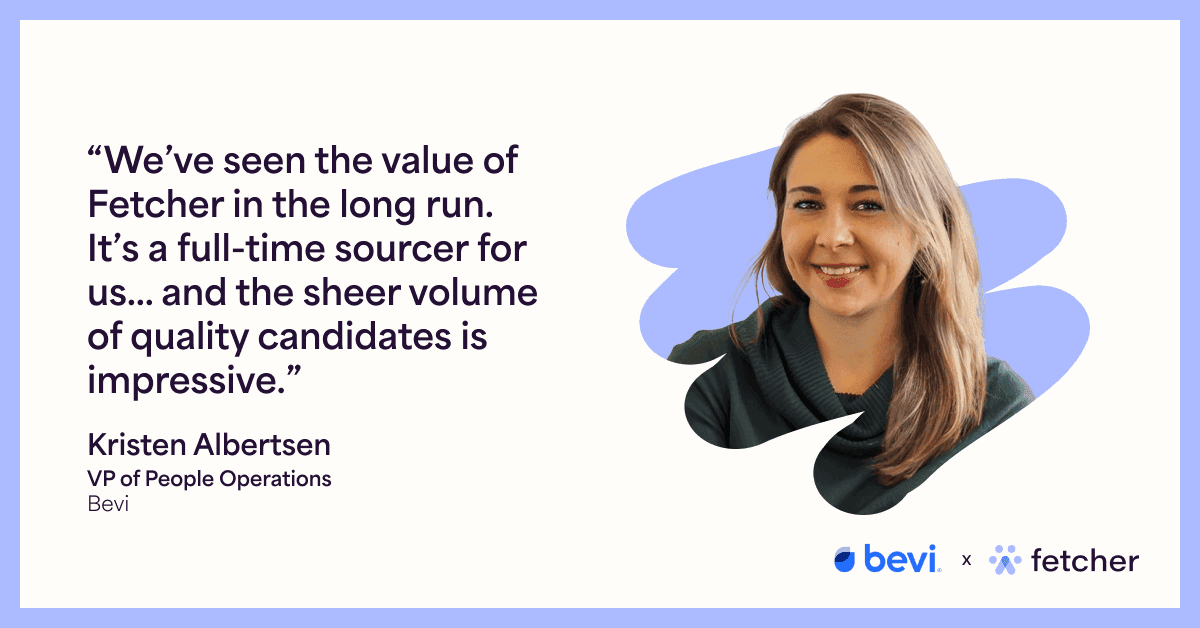There is never a bad time for recruiting teams to start building relationships with great candidates. Even if you're not hiring immediately, starting the conversations now and building brand equity will lead to easier and faster hiring.
Sourcing passive candidates allows talent teams to take a more targeted, efficient approach. Let's explore what passive sourcing is, why sourcing passive candidates is a win for you and for talent, and how you can start sparking interest with passive candidates today.
What is Passive Talent Sourcing?
Passive talent sourcing is a strategy used by recruiting and hiring teams to find and reach out to candidates who are not actively looking for new jobs. Passive candidates make up three-quarters of the total talent pool at any given time and potentially more in high-demand fields and roles. But they are often still open to a change: 85% of employed people would consider taking another role under the right circumstances.
In contrast with active job seekers, passive talent may need to learn about your company or its open positions. The first job you have with passive candidates is educating them about the company and its open roles.
Passive candidates can be sourced in several ways. The most common are social media, employee referrals, professional networks, and industry organizations, and passive candidate recruiting software like Fetcher. But you can use more than just one of these channels! If you have yet to implement a strategy for passive sourcing, testing out multiple avenues may be helpful to see which performs best for your company.
First, let's dive into the significant benefits of adding passive talent to your pipeline.

Why Source Passive talent?
To expand your talent pool. 🌱
The most obvious reason for Passive talent sourcing is that it allows you to tap into a much larger talent pool than those actively seeking employment. As of August 2023, there were almost 9 million job openings in the US and 6.3 million unemployed people. And 61% of people say they are considering leaving their current jobs this year – but they haven't yet.
By not relying solely on job seekers, you open up your organization to a broader range of qualified individuals who may not have otherwise applied for your job opening.
To reach higher quality candidates. 💎
Passive candidates are typically highly skilled, experienced, and successful in their current roles. They are often satisfied with their current positions. Still, they may be open to new opportunities if they align with their career goals. Sourcing passive talent can lead to a higher quality of candidates because you are targeting those who are already successful and have proven track records in their fields.
Plus, you can target prospects with the precise skillset and experience you (and the hiring manager) are looking for instead of hoping one of the applicants fulfills the criteria.
Active candidates can still play a part in your hiring strategy, but you'll need two different approaches to your recruiting emails to succeed with both active and passive talent.
To diversify your pipeline in an intentional, meaningful way. 🌍
If you wait for underrepresented talent to flood your pipeline, you could be waiting a long time. By recruiting passive candidates, you can set diversity benchmarks unique to your organization and take steps to expand your talent pool based on those goals. For instance, with Fetcher, you can define your diversity goals for each open role. That means you can ensure your Account Executive candidates are 50% female or that your pipeline for software engineers includes graduates from coding boot camps in addition to those with traditional degrees.
To find candidates that align with your mission and values. 🤝
Passive candidates don't necessarily need to settle for the first job offer that comes their way and, by nature, are more likely to be selective in their job search process. In addition to compensation, they can look for a company that aligns with their values, gives them greater work-life balance, and/or allows them more professional development. Because more factors go into attracting passive candidates, it can seem daunting – but it will enable you to identify those with similar values and contribute to your company's culture, leading to better team dynamics and higher retention rates.

Quick tips for resonating with passive talent
When reaching out to passive talent, you pitch your company to them versus active candidates trying to sell their experience and background to you. Your story needs to be compelling, and your communication needs to be clear. Here are our quick tips to engage right off the bat:
✔️ Be relevant. Potential candidates receive hundreds of emails a day. What about your company or open role speaks to their experience, background, or values? Being relevant means putting yourself in candidates' shoes and framing your communication regarding what your company offers them instead of how they can serve your company.
✔️ Be consistent. Again, passive sourcing takes patience and persistence. You probably didn't decide to apply to your current role based on one job posting; prospects will also need to be informed and warmed up over time. Personalized, automated email sequences allow recruiters to standardize their outreach without losing the human touch.
✔️ Be flexible. When it comes time to hire, there's a tendency to rush candidates through the application and interview stages. These candidates already work full-time, so don't write them off if they aren't immediately ready to jump ship or schedule a call. Having a level of commitment to their current role is admirable, and the fact they don’t want to neglect their responsibilities is a real positive sign. The timing might not always be right with passive candidates, but if you've built interest and trust, they may return to you!
✔️ Be enthusiastic. If you're energized about your organization and its culture, it will be much easier for candidates to get excited about it. Like sales leads, passive prospects need to be converted into active supporters. Your employer brand and candidate experience are vital to leaving prospects with a positive first impression.

About Fetcher
Our mission is to help you engage talent that will transform your business aspirations into reality. Great talent is hard to find - that's why we offer a talent sourcing platform that not only gets your brand in front of the right candidates but also gives you a competitive edge in talent acquisition.
Begin building a relationship with your next great hire today and let Fetcher handle the rest. Learn more.




